- Home
- Work
- Solutions
- Technology Expertise
Information & Communication Technology
Telecommunication
Computer Networks
Wireless Communication
Networking Devices and Hardware
Cloud Computing & Virtualization
Semiconductors and Devices
Display, Memories and Storage Devices
Enterprise Servers, Storage and Software
Microprocessors & Microcontrollers
Printers and Imaging devices
Consumer Electronics
Medical Devices
Mobile and Web Applications
IOT and Home Automation
Augmented and Virtual Reality
Autonomous Vehicles
AI, ML & DL
Business Process Automation (BPM) and RPA
OS, Middleware and Firmware
Audio/Video Codec
Cyber Security
DLT and Blockchain
Advanced Computer Architecture
Image processing
Engineering
Automotive
Mechanics
Metallurgy
Agricultural Machinery
Aerospace
Hydraulics
Oil field, Oil rig related
Consumer Electronics
NCER
HVAC & R
Manufacturing
Packaging
Optics | Sound
Life Science
Pharmaceutics
Immunology/ Oncology
Pharmaceutical/ Medicinal Chemistry
Food Compositions & Food Technology
Paints/ Dyes
Healthcare and Diagnostics
Chemical Composition
Recombinant DNA Technology
Petrochemicals
Polymer Chemistry
Sequencing Methods and Devices
- About
- Perspectives
- IT for IP
- Media
- Careers
- CONTACT US
- 日本語
- 中文网站
- Home
- Work
- Solutions
- Technology Expertise
Information & Communication Technology
Telecommunication
Computer Networks
Wireless Communication
Networking Devices and Hardware
Cloud Computing & Virtualization
Semiconductors and Devices
Display, Memories and Storage Devices
Enterprise Servers, Storage and Software
Microprocessors & Microcontrollers
Printers and Imaging devices
Consumer Electronics
Medical Devices
Mobile and Web Applications
IOT and Home Automation
Augmented and Virtual Reality
Autonomous Vehicles
AI, ML & DL
Business Process Automation (BPM) and RPA
OS, Middleware and Firmware
Audio/Video Codec
Cyber Security
DLT and Blockchain
Advanced Computer Architecture
Image processing
Engineering
Automotive
Mechanics
Metallurgy
Agricultural Machinery
Aerospace
Hydraulics
Oil field, Oil rig related
Consumer Electronics
NCER
HVAC & R
Manufacturing
Packaging
Optics | Sound
Life Science
Pharmaceutics
Immunology/ Oncology
Pharmaceutical/ Medicinal Chemistry
Food Compositions & Food Technology
Paints/ Dyes
Healthcare and Diagnostics
Chemical Composition
Recombinant DNA Technology
Petrochemicals
Polymer Chemistry
Sequencing Methods and Devices
- About
- Perspectives
- IT for IP
- Media
- Careers
- CONTACT US
- 日本語
- 中文网站
Sagacious IP’s Patentability Search service is designed with a single goal in mind – to give you the pertinent prior art, cost effectively and at the right time.
Whether you are the person in-charge for patent prosecution at a corporation, a patent lawyer or someone with the next big idea, Patentability Search is the fuel that will take your innovation(s) forward and achieve results that really matter.
Navigating The Patent Application Process – The Sagacious Way
At Sagacious IP, we assist global companies, MSMEs and Innovators planning to protect their inventions/innovations. Patentability searches help in verifying the novelty of these inventions and fetch optimal patentable subject matter. These searches are a crucial step that helps our clients decide whether to invest in a new patent application.
State-of-the-Art Patentability Searches with Quick Turnaround
State-of-the-Art Patentability Searches with Quick Turnaround
Why Patentability Search?
- Can a patent be filed? - Before a patent is filed, it is imperative to discover prior art and determine if the subject matter is patentable to save unnecessary cost on patent preparation and prosecution.
- Most optimal patent claims! - Patentability searches give you the information needed to file the most optimal claims (neither too broad to save unnecessary cost in prosecution AND nor too narrow so they are enforceable).
- Speed up Prosecution - Patentability searches help speed up the prosecution process by reducing chances of office actions.
- Enhance inventions/ design - Patentability Searches enable R&D teams to discover possible state-of-the-art to make improvements to the invention as well as design around the existing prior-art.
- Reduce Overall Costs & Time - In summary, Patentability searches prevent one from spending valuable time, money and resources on inventions that can’t be patented as well as patent worthy invention more effectively.
New! Meet LivePat™, Our Advanced AI Do-it-yourself Patentability Search Tool.
No searching knowledge required, get results immediately | Search starting at USD 160
New! Meet LivePat™, Our Advanced AI Do-it-yourself Patentability Search Tool
Testimonials




Why Choose Sagacious for Patentability Searches?
- Process adapted for both bulk contracts for large corporations as well as ad-hoc requirements by IP Law firms, SMEs and inventors.
- Robust process designed to minimize involvement of inventors/ patent counsels while ensuring right understanding and execution.
- Unique and Easy to Consume Reports
- Tic-Tac-Toe Mapping – Quick snapshot of the identified prior art references against the key features of the invention.
- Detailed Mapping – Relevant text from prior arts (along with expert comments) mapped against each invention feature.
- Highlighted PDFs – Full text PDF for each identified reference with highlighted relevant text within.
- Insights and technical opinion so you can take a quick and informed decision.
- Experience of doing 5,000+ novelty searches every year for customers of various sizes in various technology areas from 65+ countries
Meet the Experts and See detailed technology/ industry expertise by broad disciplines
Other Sagacious Differentiators?
- Language Capabilities: Handle invention disclosures, search, analysis and reporting in 16+ Languages.
- Large Multi-Disciplinary Team: 500+ in-house experts across ICT, Engineering and Life Sciences disciplines.
- Search Coverage: Patent and Non-Patent Literature from 100+ Countries in multiple technology areas covered via 10+ Specialized Databases.
- Price: Highly optimized pricing for each budget and requirement.
- Export Control: Search teams in both USA and India and Process Set for Handling Export Control Compliances!
Our Methodologies
Impact Stories
1000+ patentability searches across Multiple Technology Areas Delivered Seamlessly to a Leading US-based Printer Company
Custom Novelty Searches and First Draft of Claims Delivered to a Prominent US-based Law Firm
FAQs
What is a patentability search?
A patentability search (also known as novelty search) is performed to identify patent and non-patent literature which may affect an invention’s patentability.
Who should perform a patentability search?
Patent applicants must conduct thorough patentability searches before writing as well as filing a patent specification. These searches are also known as pre-application searches. It is important to note that a patentability search’s scope is narrower than a state-of-the-art search.
How much does a professional patentability search cost?
A patentability search can cost anywhere between USD100 to USD3,000 based on an invention’s complexity.
How can you perform a patentability search ?
Companies or inventors can carry out patentability searches in-house or outsource them to third party vendors. Whether they perform searches on their own or outsource them, patentability searches are conducted on online patent search tools using keywords, CPC classifications, and citations of the prior arts of the most relevant patents found during the search process.
A patentability search (also known as novelty search) is performed to identify patent and non-patent literature which may affect an invention’s patentability.
Patent applicants must conduct thorough patentability searches before writing as well as filing a patent specification. These searches are also known as pre-application searches. It is important to note that a patentability search’s scope is narrower than a state-of-the-art search.
A patentability search can cost anywhere between USD100 to USD3,000 based on an invention’s complexity.
Companies or inventors can carry out patentability searches in-house or outsource them to third party vendors. Whether they perform searches on their own or outsource them, patentability searches are conducted on online patent search tools using keywords, CPC classifications, and citations of the prior arts of the most relevant patents found during the search process.
It is advisable to always perform patentability searches before filing for a patent as these searches not only save one from infringing on another party’s patents but also save time, cost, and effort associated with patent filing.
Patent information can be defined as any information disclosed in granted patents as well as patent applications. This information includes description of the claimed invention, related developments in the technological field, a list of claims showing the scope of patent protection, and bibliographic data about the patent applicant/patent holder,inventor, invention dates, countries, current enforcement/ legal status, etc. It is important for patent applicants to disclose all this information about their invention(s) as it acts as a basis for developing new technical solutions and as a source of information for the public to know about the latest technical developments to further work on.
Patent documents include technological and competitive information that is not disclosed in any other form of publication. Patent information is available across almost every technological field. It is said that in 90% of the cases, patent publication is the first instance when any new technical information becomes public (as companies file for a patent but do not disclose it in any other form before patent is published). Accordingly, the information disclosed in patent documents is very crucial and timely source that helps business management, inventors, researchers, etc so they effectively:
- Evaluate the state-of-the-art in a specific technological field, e.g. to get a fair idea of the latest developments in the field and identify white spaces to grow
- Improve current products or processes.
- Identify inventions protected by patents in order to avoid infringement and seek licensing opportunities.
- Prevent duplication of R&D work.
- Assess patentability of inventions.
- Discover new trends in technology/product development early on and identify market niches.
- Monitor activities of prospective partners and competitors as well as identify M&A and other opportunities.
Generally, patent documents are published by regional as well as national patent offices, 18 months after the date of filing the first application or after a patent has been granted. Most patent offices also publish these documents on free online databases. WIPO’s PATENTSCOPE is one such database which offers free online access to international patent applications filed under the PCT System and applications filed at national and regional patent offices such as the EPO and the USPTO. You may also access eSpacenet by EPO and/or USPTO patent database as well as go to other patent offices like SIPO (China), JPO (Japan), KIPRIS (Korea), etc
Some other free yet more refined sources by industry players also include www.lens.org, Google Patents, etc
Despite free availability of information, specific skills are needed to use it effectively. Therefore, it is advisable to seek a seasoned patent information professional for exact information structure in a way to make better business / technical decisions.
Apart from free sources like patent office databases, lens.org, Google patents, etc – there are much more professional and refined sources of patent information. It includes
- Subscription based patent databases offered by players like Derwent, Lexis Nexis, PatBase, Questel, etc
Through professional patent information specialists: here also you can approach patent offices for their professional patent information services and/or approach private companies like Sagacious IP for their paid patent information service.
Patent is a type of intellectual property right that provides exclusive rights for an “INVENTION” – New Product or Process à Involving Inventive Step + Capable of Industrial Application
Broadly, Intellectual property (IP) is defined as creations of the mind, such as inventions; literary and artistic works; designs; and symbols, names and images used in commerce.
Under intellectual property laws, owners are granted certain exclusive rights to a variety of intangible assets, such as literary, and artistic works; discoveries and inventions; and words, phrases, symbols, and designs. These rights are called Intellectual Property Rights (IPR).
IP can originate from an idea or a thought which may transform into a socially useful and technologically viable product.
Again, a patent provides an exclusive right that is granted for an invention. It is a statutory right to a product or a process that generally provides a new way of doing something or offers a new technical solution to a problem. In order to receive a patent, technical information with regards to the invention must be revealed to the public in a patent application.
A patent application (written in a format specified by the patent office) can be filed with the respective Patent Office (usually your home country OR where invention was made) either with provisional specification (where you promise to provide working details of the invention later but want to secure a priority/ filing date so no one else can beat you in filing a patent for same invention) or with complete specification (providing all working details of the invention) along with fee as prescribed in the application form. In case the application is filed with provisional specification, then one has to file complete specification within 12 months from the date of filing of the provisional application. There is no further extension of time to file complete specification after expiry of said period. Again, note that patent application should be written/ drafted as per prescribed guidelines of patent office to avoid rejection and generally you may have to seek professional help for this.
The patent application then further be extended to other countries by filing extension applications in other countries or by filing a PCT application within 12 months from first filing.
Patents can be granted for inventions in any field of technology, from an everyday kitchen tool to a highly advanced nanotechnology chip.
An invention can be a product – such as a chemical compound/ machine, or a process, for example –a process for producing a specific chemical compound. Products may, in fact, contain a number of inventions. For example, a laptop can involve multiple inventions, all working together.
There are a lot of things that cannot be patented (depending on country laws). Here are a few examples:
- Ideas – Mere ideas do not execute. To be able to patent an idea, you must provide the process or documentation of its execution.
- Inventions Contrary to Established Natural Laws (Frivolous)
- Arithmetic equations – While you may patent a process using an arithmetic equation, you may not patent the equation itself, even if you discovered it.
- Discovery of Scientific Principle/Living Thing/Non-Living Substance occurring in Nature
- Laws of Nature – The Laws of Nature usually depict arithmetic equations that hold true on Earth. Although it is an exceptional discovery, you may not patent these ideas.
- Living things – When you discover or create a new species, it does not constitute a patentable invention.
- Derivatives of Known Compound | New Use of Existing Compound
- Admixture | Aggregation of Properties
- Arrangement/Re-Arrangement/Duplication of Known Devices
- Method of Treatment | Method of Agriculture/Horticulture
- Mathematical/Business Method | Computer Programme | Algorithms
- Inventions relating to Atomic Energy
Usually,there are two major checks/ decisions to be made before going for filing a patent:
The first is more of a statutory requirement, which you must fulfil to get a patent granted (you may still file it but patent office will not grant it). While these statutory requirements for patenting may change from country to country, broadly, your invention must first test the following three conditions:
- Is the invention statutory (subject matter eligible as per country laws)?
- Is the invention new and useful (Novel)?
- Is the invention non-obvious?
For more information to determine whether your invention is patentable, visit USPTO website.
For this first requirement, you may wish to engage an expert to conduct a patentability search/ novelty assessment. The professional will conduct a prior art search focused on identifying patents/ other publications (any where in the world in any language) disclosing same / similar inventions and will accordingly provide a patentability opinion for your invention.
The second is more a business assessment to see if investment in a patent application will generate enough ROI and you determine if it will aid in your business in anyway. There could be many objectives of you seeking to patent you invention and unless these objectives are fulfilled, there is no point in going for a patent protection as it will require both money and time commitments. Usually, a technology evaluation report can be ordered from a professional patent consulting company to evaluate and guide if it is a good idea to patent your invention keeping my mind your objectives, market success, etc. They will also guide about which countries you should be filing your patents in depending on your objectives and expected ROI.
The main pillar on which patent system is built is disclosure of inventions in such details that anyone skilled in the art can replicate that invention for greater good of human race. If inventions are kept secret, people will not be able to further improve upon those and build further new things. However, in return of disclosing your invention in full, patent offices around the world give you a limited time monopoly of around 20 years (generally sufficient to monetize and harness your invention).
Accordingly, it is usually not possible to obtain a patent without disclosing complete information about your invention. Patent offices around the world grant patents only after the applicants reveal the complete details related to the invention.
After disclosure of information to patent office, patent office publishes the invention details making it available to the public.
Having said that even when you file for patent usually there is a period of 18 months (from first filing date) in which your invention is only with patent office and is not published for public. You may further extend this period by filing a non-publication request (comes with some cons though) and it is then published only upon final decision about your patent application.
You can certainly discuss your invention with a prospective investor prior to filing a patent application. However, it comes with certain risks (even if you have signed a non-disclosure agreement with them as NDAs are not that effective and it is difficult to prove misuse of information).
Further, there is huge risk if investor makes invention publicly available (knowingly or unknowingly in any form that can be found by patent office later) before a patent application is filed. This public disclosure (that can be in the form of oral or written) would be considered – a prior-art. In many nations, if this public disclosure can be associated with you (because of NDAs, etc), you may get a grace period of 6-12 months for patent filing (without this public disclosure acting as a prior artyou’re your own invention) but in other there is no grace period.
Accordingly, it is advisable that you file for a patent (even if a provisional application) before you discuss your invention with an investor so they cannot misuse it. Provisional patent application will give you patent pending rights and are usually not very costly to file. Once your discussion with investor goes good, even investor can finance the filing of complete specification patent application (non-provisional patent) as well as filing the application in multiple countries.
There are numerous advantages associated with having patents for your business, some of them being:
- It gives you a competitive edge as your competitors cannot practice your invention without your permission giving you a monopoly in the market. Based on this, you may be able to charge a premium from your customers.
- It enhances the overall valuation of your business by multiple times. In fact, many businesses across the globe now have around 70-80% of their valuation in intangible assets like IP. Even if you do not do well in the market, your business can still make money by licensing/ selling patents.
- You can add another revenue stream by licensing your IP to other companies in other countries or markets that you do not directly serve.
- It is also helpful in mitigating IP related litigation risks as you can enter cross licensing deals etc (I am not explaining this in detail here as this is a little complex subject)
Having said the above though, it is important to understand that patents are as useful and can be acquired for any area of technology from small machine parts to computers. In fact, most patents are not granted for revolutionary scientific breakthroughs instead for inventions that improve existing inventions and have some simple uses. For instance, the second or third generation of a product/process which works in an efficient as well as cost-effective way. Furthermore, some countries have certain legal provisions for protecting incremental innovations. These are termed as utility models and they usually have a shorter duration as compared to patents and are easier to obtain.
- Exclusive rights: Patents offer exclusive rights to stop others from exploiting an invention for 20 years from the filing date. Once you have this right, you may be able to charge a premium for your invention from your customers improving your bottom line.
- Option to sell/license: You can sell or license the patented invention to another organization and generate a new revenue stream even from markets that you are unable to serve directly.
- Return on investments (ROI) and Business Image: Similar to the first point, this further helps you position your business as a thought leader in the market and obtain higher brand loyalty / ROI.
- Better Valuation for your business: Patents usually enhanced your business valuation by multiple times. Also, patents can be mortgaged/traded independently for a cash infusion to the business.
Enhanced bargaining power: If you are in the process of acquiring rights to another company’s patents, your own patent portfolio can help you enter into a cross-licensing arrangement. This also comes in handy during litigations with your competitors.
If you think your invention has commercial benefits, there are multiple negative consequences of not patenting your invention and/or not patenting it timely. Some of these are listed below:
- Competitors may misuse your invention to make products. In case that product is successful, others may follow suit to manufacture more products without seeking your permission.
- Larger companies may produce the product at lower prices and compete at more favorable market prices pushing you out of the market for your own creation If you had a patent, you could sue them and they had to stop/ pay you royalties.
- Even smaller companies may produce & sell the product at a lower price as they would not have to recover the original R&D costs incurred by your company.
- Possibilities to sell, license or transfer technology will be hampered if you do not patent your invention.
- Someone (individual or enterprise) may patent your invention first leading to a situation where you are unable to sell your own products and may have to pay others to monetize your own invention
If available in a country, utility models may be a good alternative when an enterprise merely improves an existing product and the improvement in question is not inventive enough to be considered patentable (such utility models have shorter protection 5-10 years and are not as strong as a patent in terms of enforcement but can be a good deterrent for competitors copying your products as you can make them stop pretty effectively).
Further, sometimes it may also be advisable for your company to preserve innovations as trade secrets, however, note that trade secret is applicable till this is disclosed/ leaked (and hence is a very weak right). Further, if anyone else patents it (as trade secrets will not be acting a prior art) – you may get in trouble and may not be able to practice the invention if challenged.
Accordingly, one more strategy (sometimes) could be opting for a defensive publication to make sure that no one is able to patent your invention. However, you should be cautious while using this strategy, since if you reveal your invention without filing a patent application, you may restrict your possibility of obtaining patent protection as well as open it up for others to use freely. Although there are some interesting use cases of defensive publication that we are not discussing here but in those cases it is one of the best strategies.
In usual practice, if an employee invents a new product or process during his/her tenure within the company, the invention and associated patent rights are owned by the enterprise. To avoid disputes, employers frequently specify issues of IP ownership in their contracts. However, depending on the case, the employee may have a right to reasonable remuneration as per the legislative provisions or the employment contract. Regardless of who owns the patent, the employee will always hold the right to be cited as the inventor.
Free Samples - Patentability Search Reports
Checkout our samples (reports) in different technology/industry domains
Sample
Patentability Search for ICT domain
(Information and Communications Technology and related topics)
Sample
Patentability Search for Engineering domain
(Automotive, Mechanical, Electrical and related topics)
Sample
Patentability Search for Life-Sciences & Chemistry domain
(Biotechnology, Pharmaceuticals, Medical Devices and related topics)
Webinars
Register for Exclusive Webinar Series (Cost: $0 (Free) Limited Seats Available.
Don’t miss the opportunity, Register Now)
Our Patent Information Searching Services
Quick, Budget-Friendly to Robust, Comprehensive Searches
Need 15+ searches every month?
Customized and Easy to interpret Report Formats
We conduct 5,000+ searches every year. Get started with yours today.

On-Demand Webinars
Webinar
Hybrid Patentability Searches™ – An Innovative Way to Ensure Quality at Significantly Lower Costs and Turnaround
Webinar
Offshoring Patentability Search – Ensuring Compliance with Export Control Regulations
Join our Community for the Latest Developments in the IP SpaceContact Us


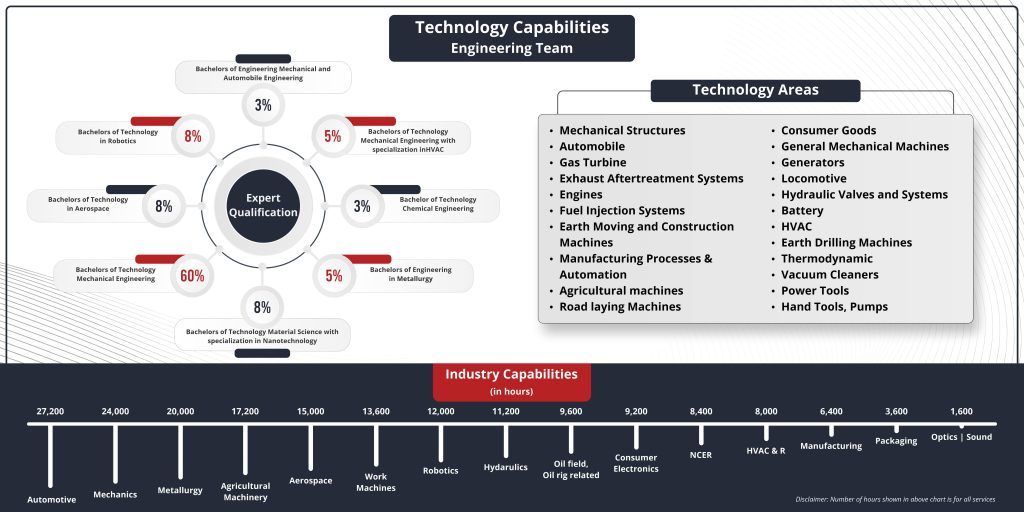
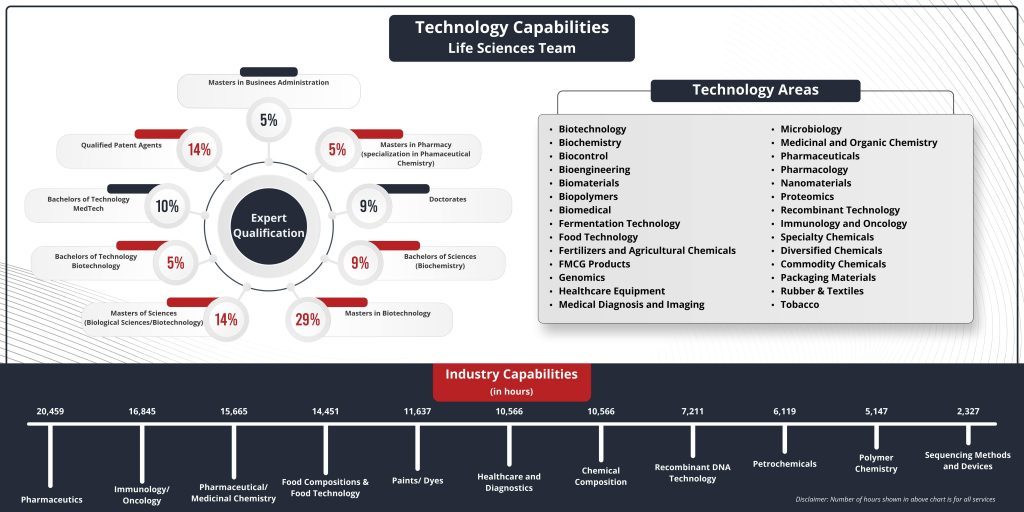
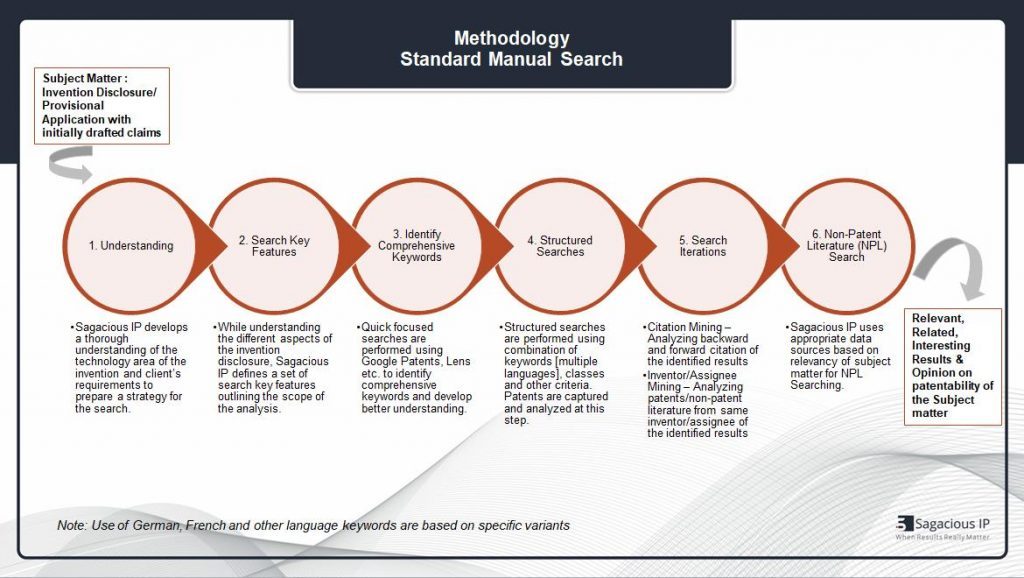
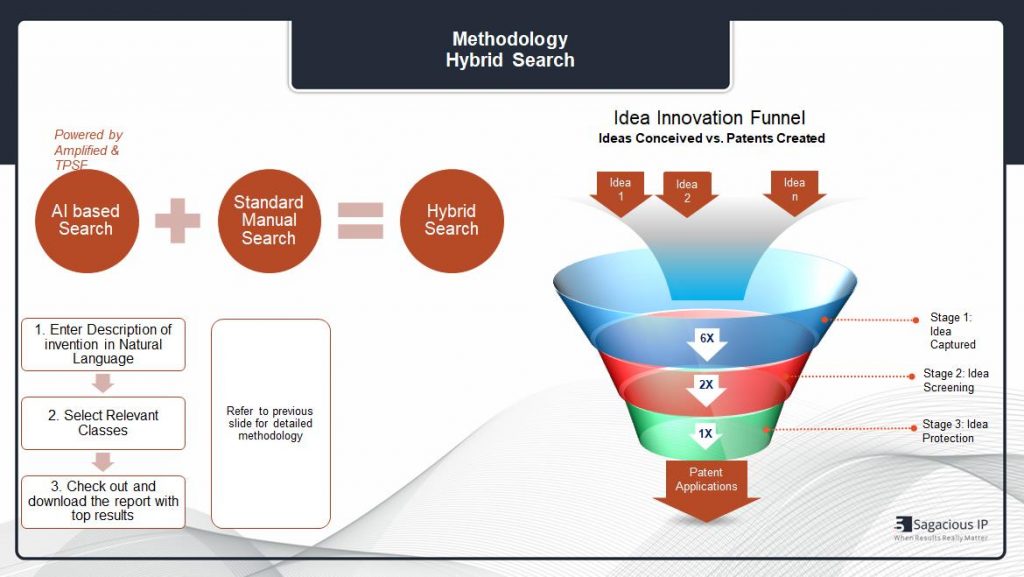
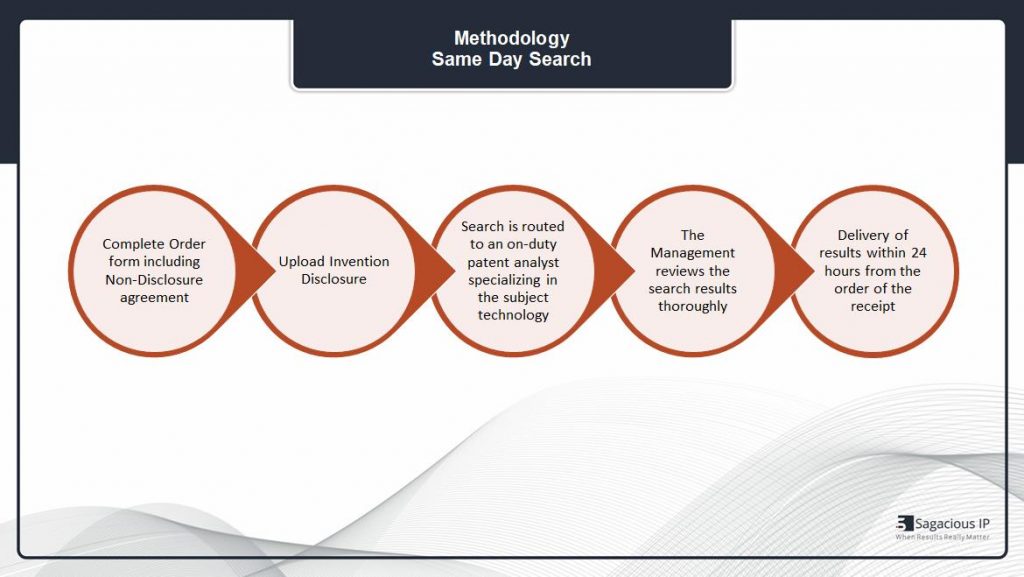
Sample – Patentability Search for ICT domain
Sample – Patentability Search for Engineering domain
Sample – Patentability Search for LSC domain
"*" indicates required fields
Hybrid Patentability Searches™ – An Innovative Way to Ensure Quality at Significantly Lower Costs and Turnaround
Offshoring Patentability Search – Ensuring Compliance with Export Control Regulations
Performing Prior-Art Search in Pharmaceutical Domain – A Structured Approach
Introducing LivePat™ – AI Based Prior-Art Search
"*" indicates required fields




